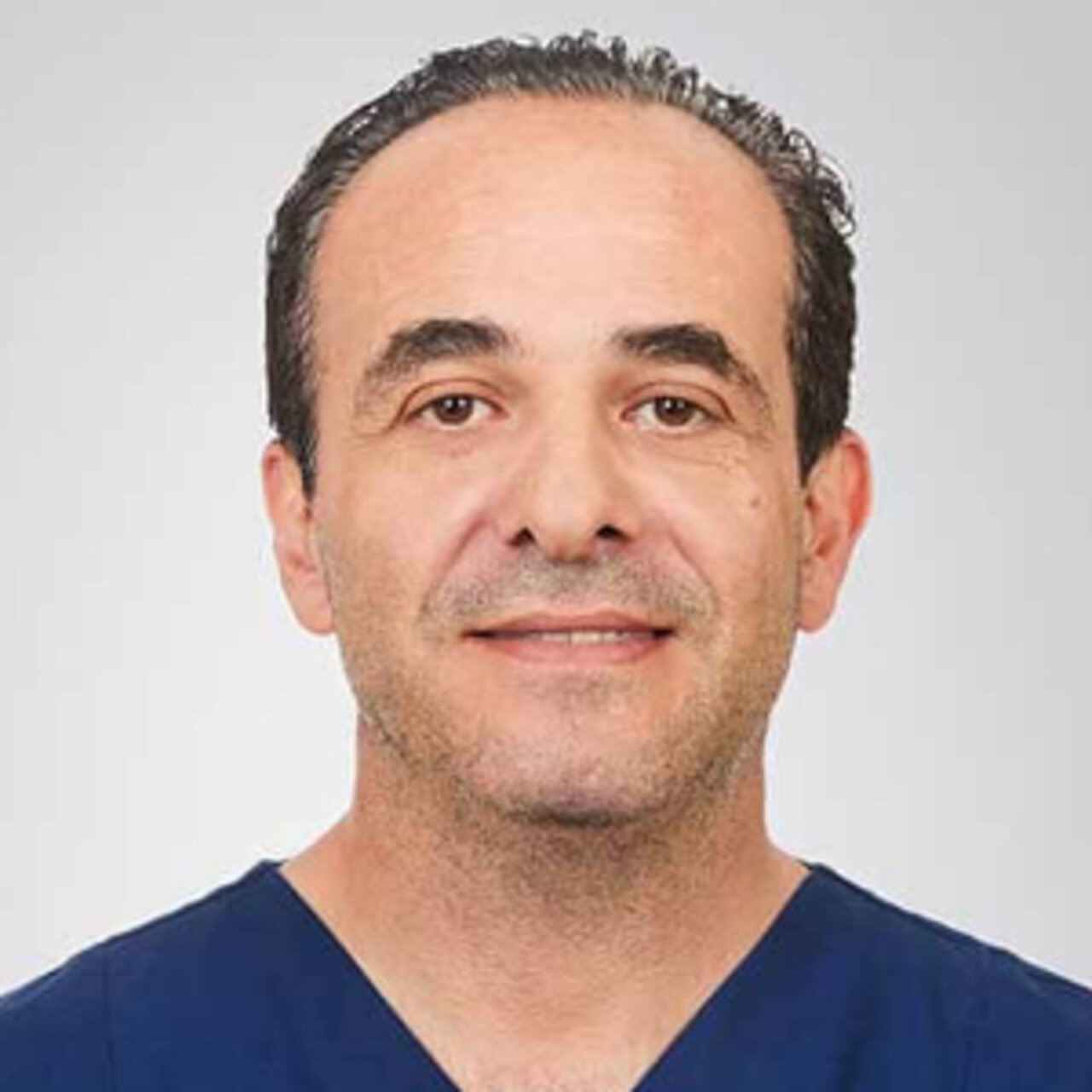Specialists in Adenomyosis
8 Specialists found
Information About the Field of Adenomyosis
What is adenomyosis?
Adenomyosis refers to cells of the uterine mucosa found in the muscular layer of the uterus which can result in its enlargement of up to three times. Ectopic (that means not in its normal physiological location) mucosa remains involved in the menstrual cycle.
It is not known exactly how common this condition is, as definite diagnosis is challenging. It does, however, seem to be a widespread condition.
Causes: How does this gynecologic condition develop?
The cause of adenomyosis remains unclear. Nevertheless, various theories have been proposed.
Based on studies, there is evidence that uterine surgeries are a risk factor. Possibly, during these operations, cells of the uterine mucosa are carried into the muscular layer.
Adenomyosis also affects women who have had several pregnancies more frequently. As a result of inflammatory changes which occur after the birth, cell junctions may loosen and allow singualr cells to break free from the tissue and enter the false layer.
A further possibility is that early errors of fetal stem cells may occur during the formation of the uterus, which means that the disease is congenital, or that stem cells derived from the bone marrow may reach the uterine musculature through the blood vessels and differentiate into mucosal cells there.
What symptoms are typical for adenomyosis?
Some patients with adenomyosis may not notice anything or only very mild symptoms. The following may occur, though:
- Menorrhagia (increased and/or prolonged menstrual bleeding)
- Dysmenorrhea (intense pain during menstruation)
- A feeling of tightness or chronic pain over the pelvic area
- Dyspareunia (painful sexual intercourse)
These symptoms will often resolve with the beginning of menopause.
Some studies point out that adenomyosis can potentially lead to infertility. However, as many women diagnosed with adenomyosis also suffer from endometriosis, the role of adenomyosis in this regard is not yet clear.
How is a diagnosis made by a physician?
Apart from characteristic symptoms, a number of diagnostic methods can detect adenomyosis. Definitive confirmation, however, requires surgery.
During physical examination, an enlarged or tender uterus may be noticed.
An enlargement can be detected also with the help of ultrasonography. In addition, this can rule out some differential diagnoses, such as fibroids of the uterus, which could lead to similar symptoms.
An MRI (magnetic resonance imaging) scan reveals the islets of mucosal cells within the muscular layer of the uterus as focus lesions in cases of adenomyosis. However, it is not possible to distinguish these from benign uterine tumors such as fibroids with certainty.
A diagnosis can only be made with definitive reliability by histological examination. In other words, the layers of the uterine wall are examined under a microscope. In case mucosal cells are detected in the muscle, proof of adenomyosis is established. Nevertheless, microscopic examination is only possible after a hysterectomy (removal of the uterus) and is consequently not performed in most cases.
Therapy and treatment options for adenomyosis
Surgical removal of the uterus is the only cure for adenomyosis. But since it is not a life-threatening illness and the severity of symptoms can be very different between patients, in most cases such a radical therapy is not necessary. According to the gravity of the disease, a number of symptomatic therapies are available.
Pain medication
Mild symptoms are often sufficiently managed drugs from the NSAID (non-steroidal anti-inflammatory drug) class which are taken just before and during menstrual bleeding. For instance, the well known medication Ibuprofen is one of such analgesic and anti-inflammatory drugs. Applying local heat can also help to relieve pain.
Hormonal therapy
Prolonged and painful menstrual bleeding can respond to various hormone therapies, such as progestins, available in the form of an IUD or the pill. These hormones reduce the growth of the uterine lining to a very low level. This makes menstruation periods shorter, less pronounced and less painful.
Arterial embolization
This minor procedure involves puncturing the femoral artery in the groin and advancing a fine tube up to the blood vessels feeding the uterus. The small blood vessel responsible for supplying blood to the adenomyosis is occluded from the inside. Consequently, the lesion becomes shriveled as oxygen is not supplied properly.
Endometrial ablation
If the adenomyosis has not reached very far into the muscular layer, endometrial ablation can be performed as a minimally invasive alternative to hysterectomy. The patient will be under general anesthesia while her endometrium is completely scraped out or cauterized through a vaginal approach.
In patients with a high level of suffering and who have failed to respond to all symptomatic therapy options, surgical removal of the uterus under general anesthesia represents a highly invasive treatment option, although one that ensures a safe cure for adenomyosis.
What is the difference between endometriosis and adenomyosis?
Both adenomyosis and endometriosis show cells of the endometrium in tissues where they do not belong physiologically. However, while adenomyosis involves their presence in the muscular layer of the uterus, endometriosis is defined by ectopic cells emerging outside the uterus, such as on the intestines or ovaries. Hence, endometriosis can present with a much more diverse set of symptoms.
The development of both diseases has not been fully clarified. Nevertheless, it is noticeable that they are often associated with each other.
Adenomyosis and the wish to have a child - what needs to be considered?
Studies have demonstrated that adenomyosis seems to have negative implications for the development of pregnancy. Moreover, as the disease compromises the muscle function as well as the remodeling of the so-called spiral arteries present in the uterus, there is an increased risk of several complications:
- Abortions
- Prematurity
- Pre-eclampsia
- Intrauterine growth retardation
- Obstetric bleeding
- The need for a C-section
- Uterine rupture
- Fetal abnormalities
- Premature rupture of the membranes
Despite higher rates of complications, in most cases pregnancy with ongoing adenomyosis is absolutely possible.
That said, the choice of therapy must take into account the patient's desire to have a child. It is not possible to conceive after procedures such as hysterectomy or endometrial ablation.
Hormonal therapy with gestagens works like a contraceptive for as long as it is taken. Tubal motility is reduced and the cervical mucus becomes thicker, so the probability of pregnancy is severely diminished. Nevertheless, thoseeffects come to an end once the gestagen treatment is terminated, so if you wish to have a child later, there is no reason against this therapy.
Yet another hormonal therapy involves gonadotropin analogues, which even have a positive influence on the implantation of an embryo in the uterine mucosa.
Which doctors and clinics are specialists for adenomyosis?
Adenomyosis is a frequently encountered gynecological disease, for which the treatment is initially provided by gynecologists in an outpatient setting. Should an invasive approach become necessary because of the seriousness of the disease, the patient must be referred to a gynecological clinic offering the appropriate surgical and radiological options, along with experience in the surgical treatment of adenomyosis.
In the event of adenomyosis patients whose desire to have a child has not yet been fulfilled, treatment can be carried out in fertility clinics that have the appropriate skills and expertise.
If you're in need of a doctor, you expect the best medical care possible. So of course patients are curious to find out what clinic to go to. As there is no objective way to answer this question and a legitimate doctor would never claim to be the best, patients must rely on a doctor's experience.
Let us help you find an expert for your condition. All listed doctors and clinics have been reviewed by us for their outstanding specialization in the field of adenomyosis and are looking forward to your inquiry or wish for treatment.







